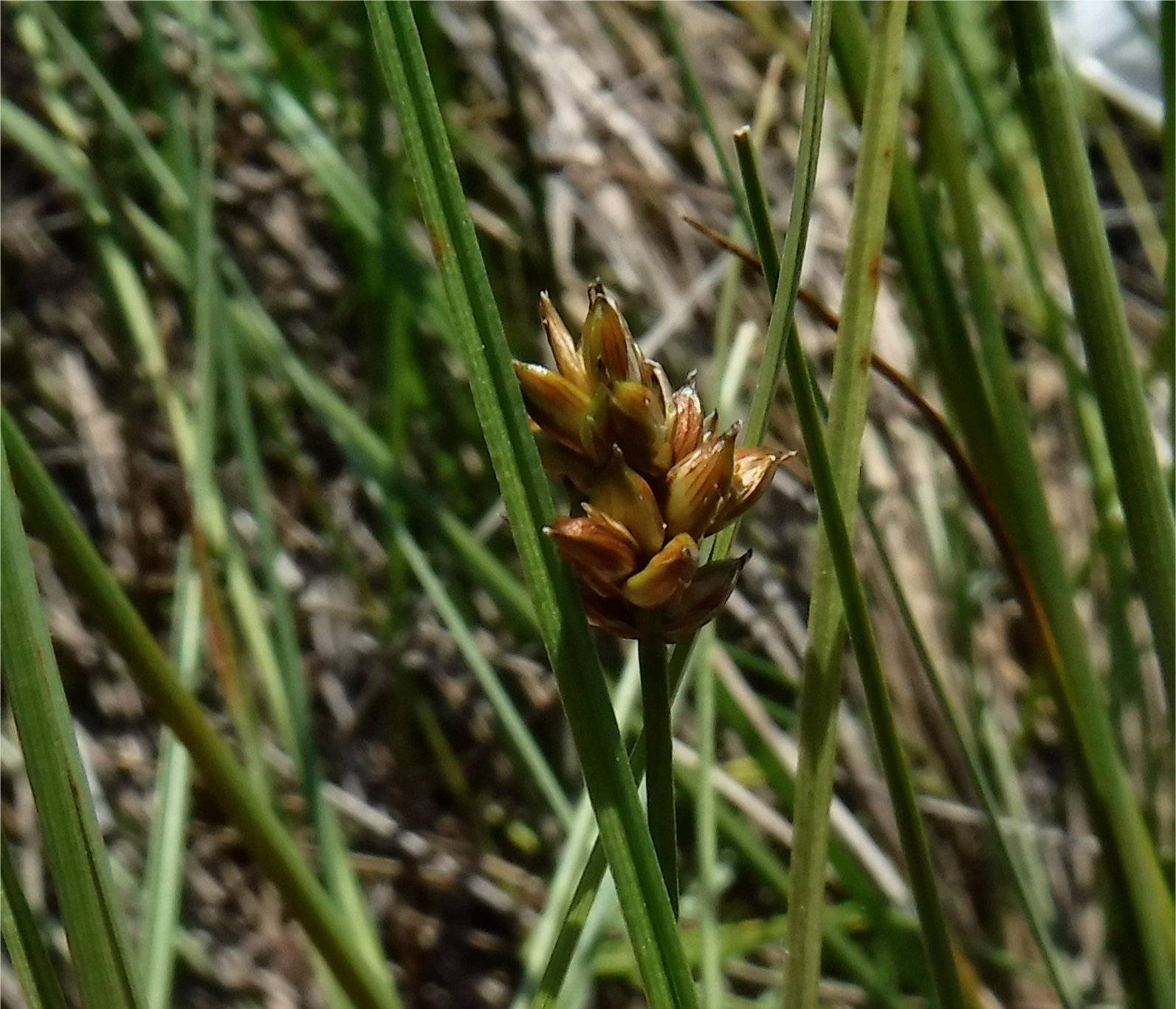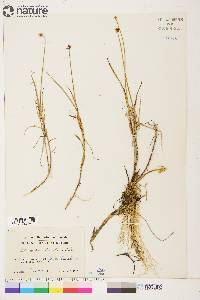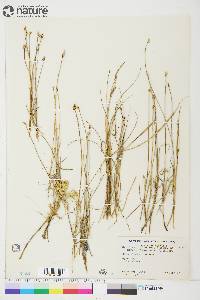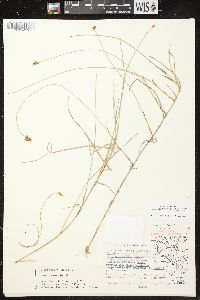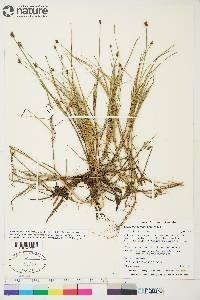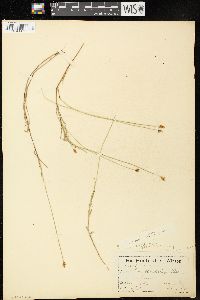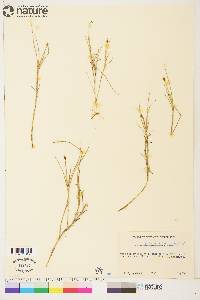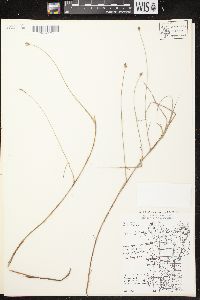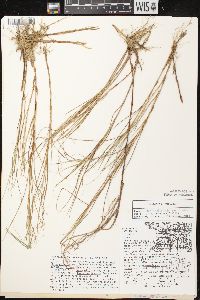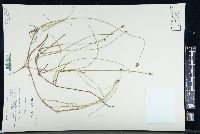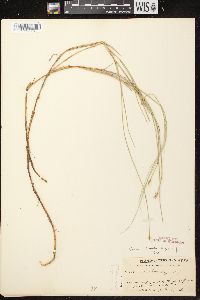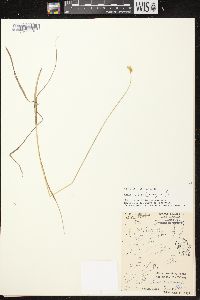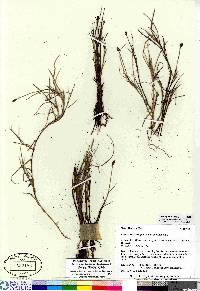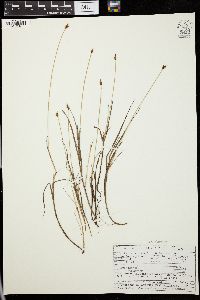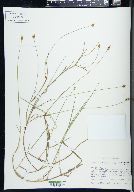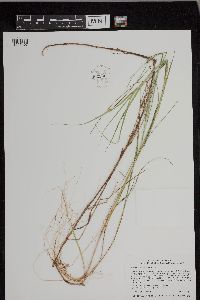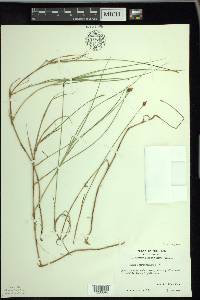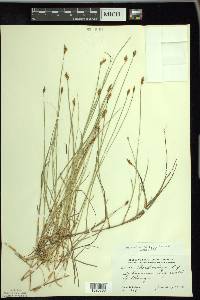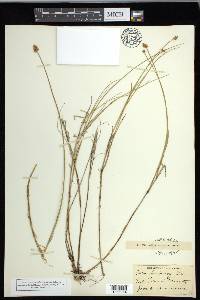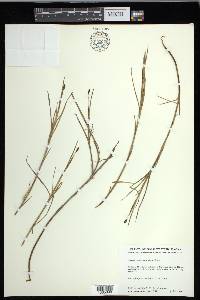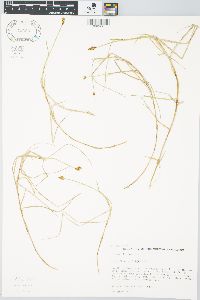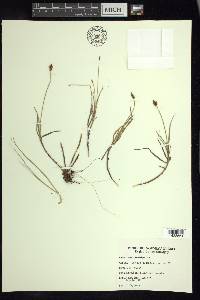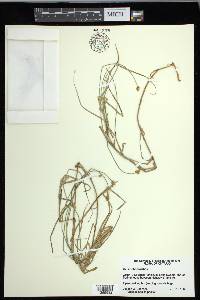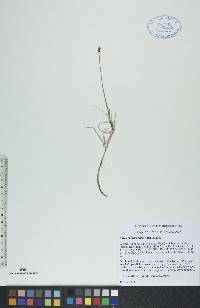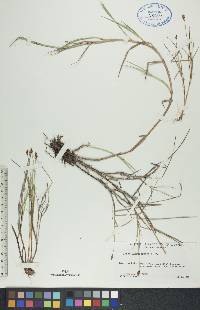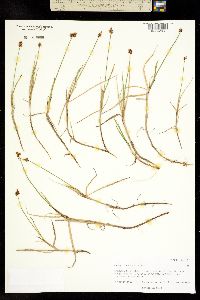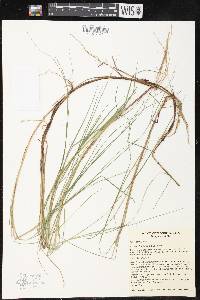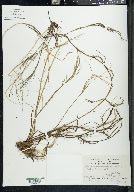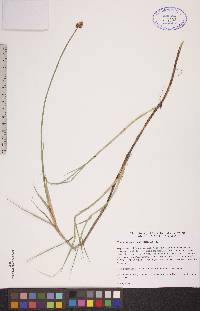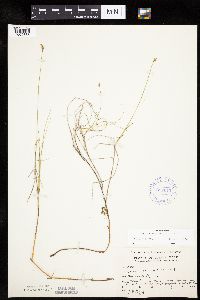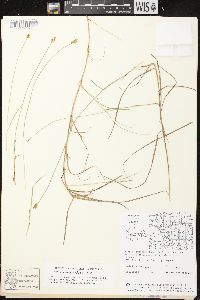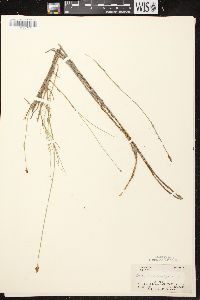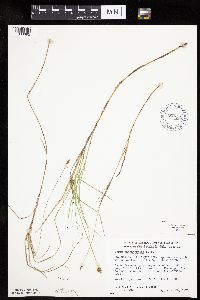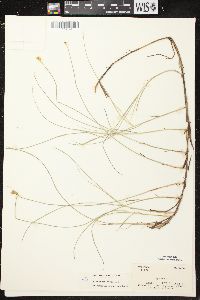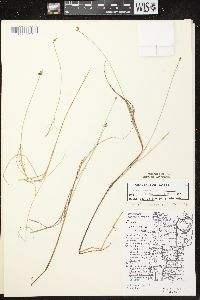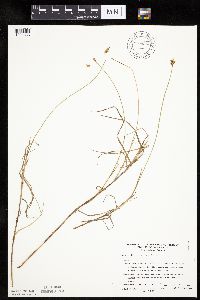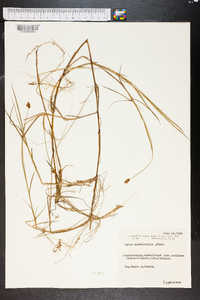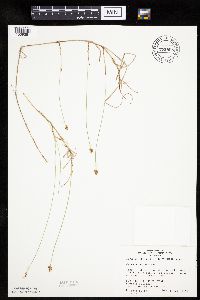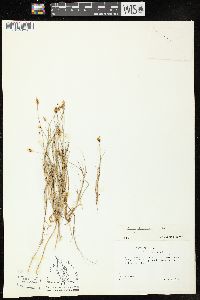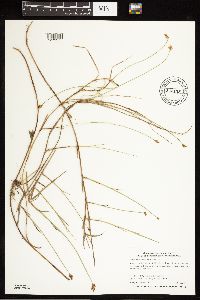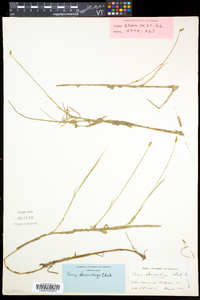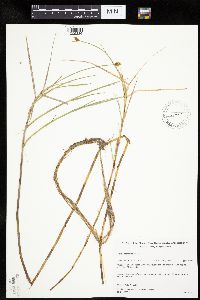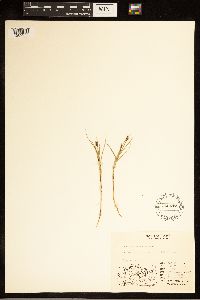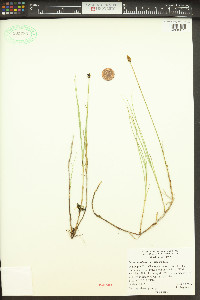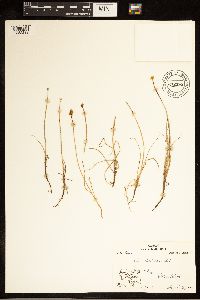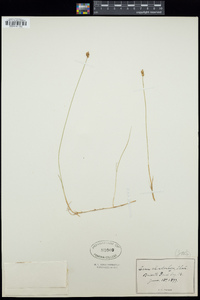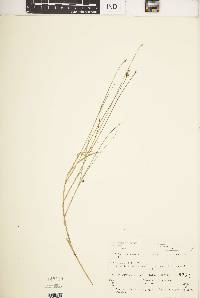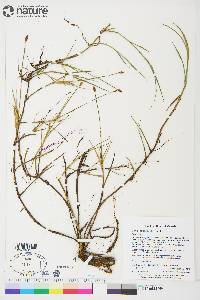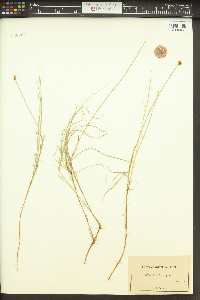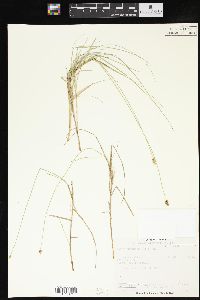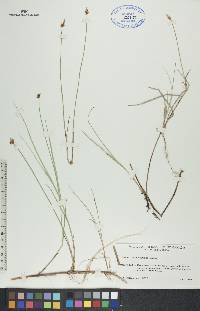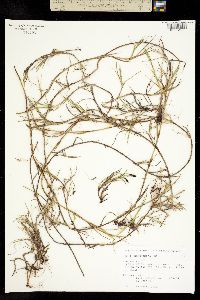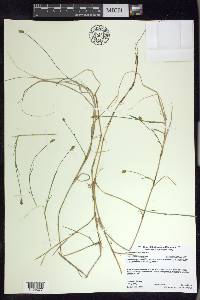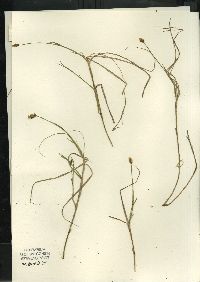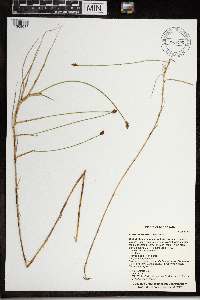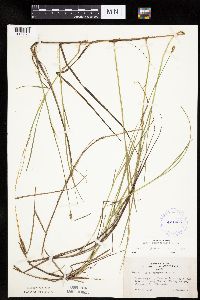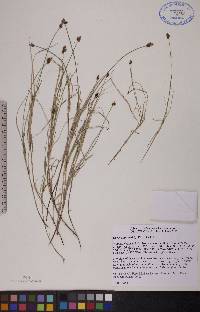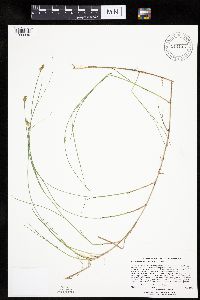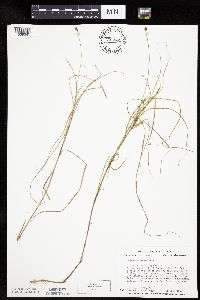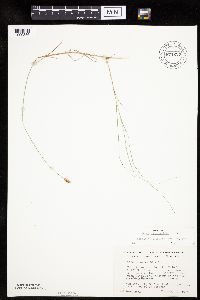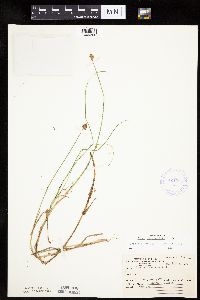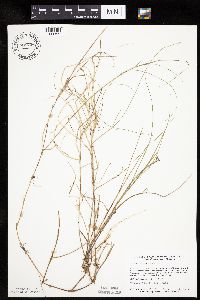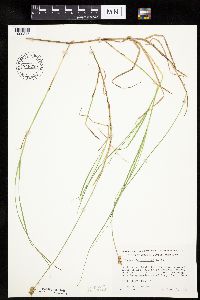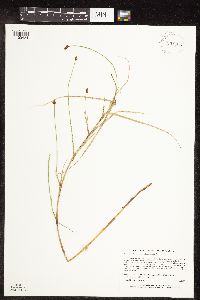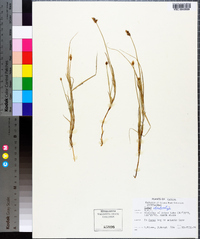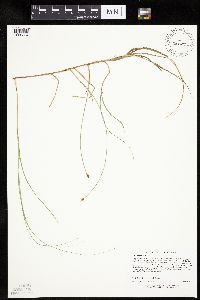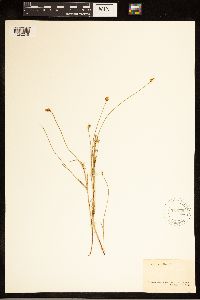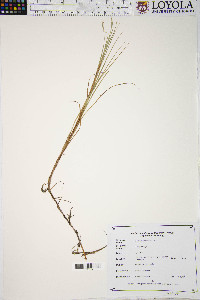
|
|
|
|
Family: Cyperaceae
Rope-Root Sedge, more...creeping sedge
[Carex fulvicoma Dewey] |
Culms bluntly trigonous, 5-35 cm, smooth or scabrous distally; vegetative stems ascending to erect when young, becoming prostrate stolons at maturity, elongating to 120 cm. Leaves: sheaths with fronts pale brown at apex; ligules 0.6-6.2 mm; blades 0.4-3 mm wide. Inflorescences 5-16 × 4-12 mm; spikes ascending to spreading, ovoid to broadly ovoid, 4-8 × 2-5 mm. Pistillate scales brownish with green center and paler margins, ovate to broadly ovate. Staminate scales ovate, apex obtuse to acuminate. Perigynia dark brown, 12-28-veined, 1.4-2.2 mm wide, apex erose to weakly bidentulate, glossy. Achenes silvery brown, smooth. 2n = 60. Fruiting late spring-summer. Fens, bogs, floating mats on lakeshores, emergent sedge marshes, usually in very wet sites, often in shallow water; 0-1500 m; Greenland; St. Pierre and Miquelon; Alta., B.C., Man., N.B., Nfld. and Labr., N.W.T., Nunavut, Ont., P.E.I., Que., Sask., Yukon; Alaska, Ill., Ind., Iowa, Maine, Mich., Minn., Mont., N.H., N.Y., Oreg., Pa., Vt., Wis.; Eurasia. Easily overlooked, Carex chordorrhiza is uncommon and local in much of its range, especially in districts with predominantly acidic soils. However, it can form extensive stands and be a dominant species in some boreal wetlands. Oregon collections represent occurrences in commercial cranberry bogs and are presumably introductions. The rhizomes are short and rarely collected; the leafy vegetative stems elongate dramatically as the season progresses. At first erect to ascending, the stems eventually lie flat and next season send out roots and shoots from the nodes. These horizontal stems typically become overgrown by moss or form networks in shallow water, thus appear to be rhizomes.
Old stems much elongate, prostrate, clothed with parts of the old lvs; fertile stems 1-3 dm, with 1-3 lvs near the base, their blades 1-5 cm; sterile stems with several much longer lvs; lf-blades 1-2 mm wide; head 5-12 cm, crowded; spikes 3-8, androgynous; scales broadly ovate, about equaling the perigynia, these 1-5, plump, oblong-ovoid, 2.5-3.5 mm, nearly as thick as wide, strongly many-nerved, obscurely margined, the beak emarginate, a fourth as long as the body; achene thick-lenticular; 2n=62. Sphagnum-bogs; circumboreal, s. to Mass., N.Y., Ind., Io., and Mont. Gleason, Henry A. & Cronquist, Arthur J. 1991. Manual of vascular plants of northeastern United States and adjacent Canada. lxxv + 910 pp. ©The New York Botanical Garden. All rights reserved. Used by permission. From Flora of Indiana (1940) by Charles C. Deam A northern species reaching the southern limit of its range in northern Indiana where it is rare. The two Indiana collections are from very wet sphagnum bogs; elsewhere in its range it is found also on peaty borders of lakes. The Indiana stations are: in a tamarack bog a mile south of Leesburg, Kosciusko County, and in an open tamarack bog west of Goose Lake, Whitley County. ...... Indiana Coefficient of Conservatism: C = 10 Wetland Indicator Status: OBL |
This project was made possible in part by the Institute of Museum and Library Services [MG-70-19-0057-19].
Powered by Symbiota

